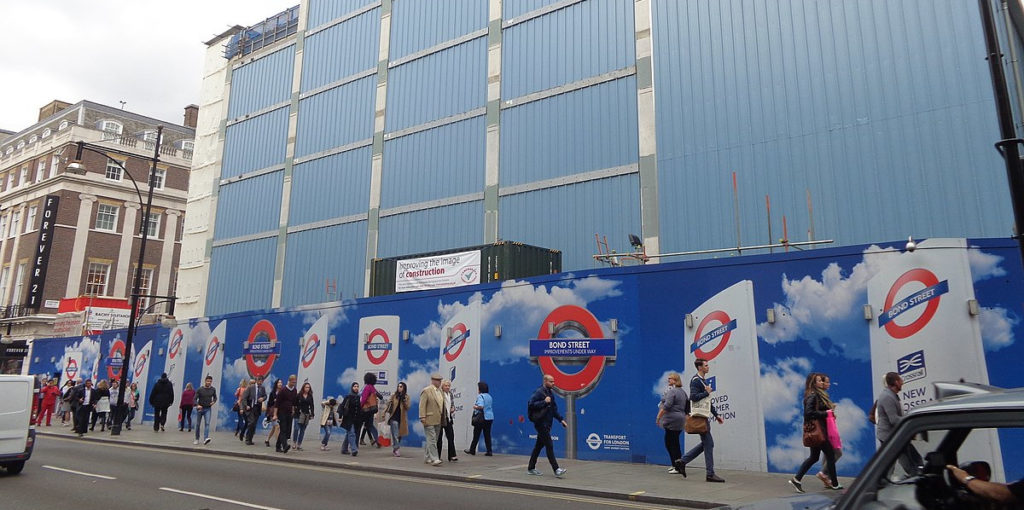Walking past Bond Street Station today I cannot believe anyone really believed that Crossrail would open on time, despite the Queen marking the completion of the tunnelling at Bond Street and naming the line on the 26th February 2016.
“It’s done on time and budget” was the message. However, that was the easy part completed at the expense of ignoring the really important part of the “Railway Systems” and the Communications and Control Systems. Poor decision-making and governance led to Crossrail having 3 signalling systems on one line – defying common sense and causing huge delays and cost increases.
We all know Crossrail is way behind schedule and over-budget. The ‘Transport Committee, April 2019 – Derailed: Getting Crossrail back on track’ report makes fascinating, if demoralising reading. One only has to read to the third paragraph to find; ‘it is frustrating that top Crossrail executives have not taken responsibility for their mismanagement of the project in its later stages. This despite the fact that they were taking home eye-watering salaries and bonuses to deliver the project.’
For me, a quote that really stood out was,
“One of the problems that we are dealing with here is the fact that we are trying to integrate three signalling systems. We need to find a way to simplify big infrastructure projects…With the nature of signalling arrangements for example, on Crossrail 2, whilst it might sound a bit geeky, that needs to be considered right at the outset.”
Heidi Alexander, Deputy Mayor of London for Transport, 12 September 2018.
Forget the ‘unchecked optimism’ to be found in TfL management which was “only interested in presenting good news”, the signalling issue raises real concerns about a lack of core management sense and the question of who leads a project – Civil Engineering or Systems Engineering. Remember when the Waterloo and City Line new trains did not fit in the tunnels? It is not “geeky”, it is the basic understanding of all the components in “the system”. It is not just the civil engineering “challenge”
Which discipline should lead an infrastructure project?
I have seen many examples where Civil engineering leads a project, pours the concrete and puts in the steel struts first. These tangible actions reassure everyone that progress is being made. The problem is that this work is being undertaken without full understanding of the rest of the infrastructure. Hence, the platforms aren’t long enough to take the new longer trains that will move more people quicker around the system. The concrete has to be ripped out because the cabling has not been laid.
This situation is more than attitude towards “geeky” aspects of the project. This is basic project engineering and highlights the real challenge, which the report does not address, of interface / integration management. The problem is that the DfT / TfL / CRL see the civil engineering part of the contract as the most important and then lose interest when the “Geeky” part starts.
What especially stood out was the delay in train procurement. The contracts for systems should have been one of the first awards made as this would include signalling, rolling stock, Communications & Controls. Once the systems are understood and how they need to be integrated to work efficiently, then the civil engineering structures can be designed to effectively support them at an optimised level. Unfortunately, when done in reverse, all the other sub-systems must be compromised rather than optimised because of the work already undertaken by the Architects and Civil Engineers.
Simple actions that will save money and time
I’ve worked on numerous major infrastructure projects around the world and hard-won experience has taught me that three best practices make all the difference in achieving the desired and successful outcome.
- Systems Engineering leads
It’s easy to pour concrete, it’s hard to dig it out so don’t take action until the systems aspects of the project are developed and in place.
- Collaboration is key
Clarity from the start on the aims of the project and the role each party plays in achieving the right outcome for funders, contractors and users.
- Strong governance
Hold people to account from day – retrospective assurance processes are painful, costly and simply lead to the blame game.
Simple but effective, these three measures will make the difference and stop crazy decisions that having 3 signalling systems – with huge integration challenges – is better than 1 running throughout the line. Surely that’s just common sense.
